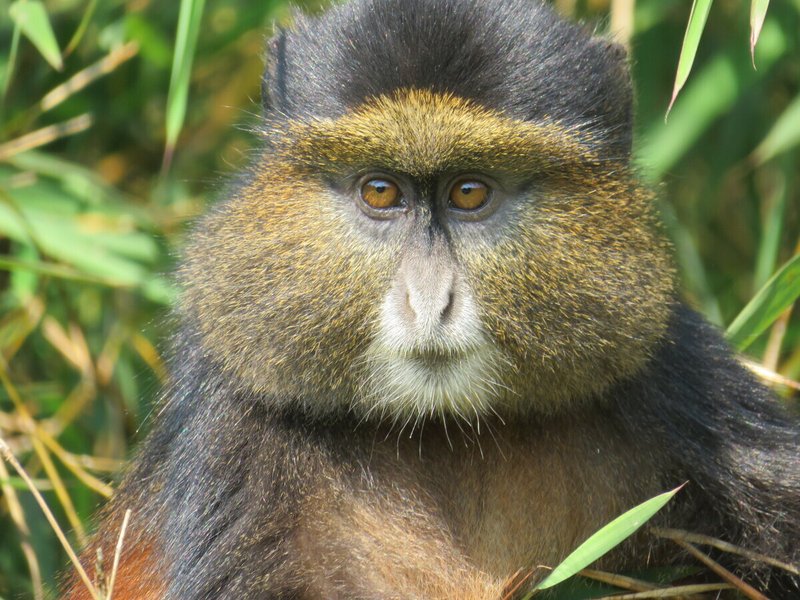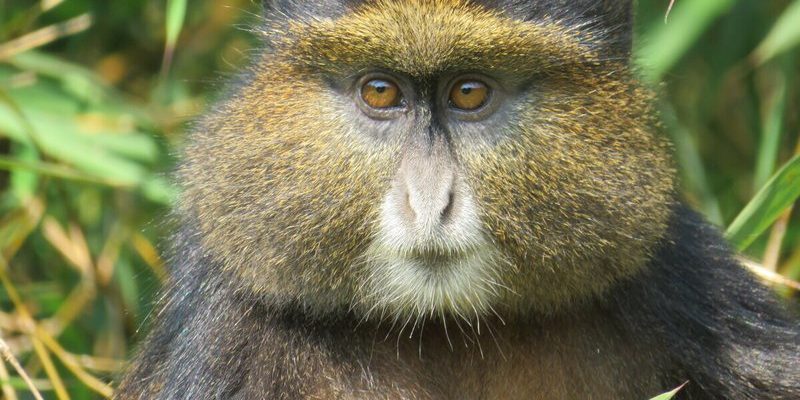
When you think about unique animals, the blue monkey often comes to mind. With its striking appearance and intriguing habits, this primate can captivate anyone’s attention. Imagine a lively, agile creature known for its vibrant blue-gray fur and playful nature. Found mainly in the lush forests of Africa, blue monkeys are a species that most of us don’t encounter in our daily lives, making them all the more fascinating. But what makes them so special? Let’s explore the world of blue monkeys and uncover their secrets.
The blue monkey, scientifically known as Cercopithecus mitis, is a type of guenon, a group of Old World monkeys. These monkeys have adapted well to their environments, which range from tropical rainforests to more open woodlands. Their social structure, communication methods, and behaviors are captivating studies of primate life. Through this article, we’ll dive into their habitats, diets, behaviors, and much more, providing a comprehensive view of these unique animals.
Physical Characteristics
One of the first things you’ll notice about the blue monkey is its striking coat. The blue-gray fur gives them their name and acts as excellent camouflage in their natural habitat. This coloration, paired with their long limbs and expressive faces, makes them quite a sight to behold. They have a distinctive face, often with a white throat and cheeks, which adds to their charming demeanor. But how big are they, exactly? Well, blue monkeys typically stand about 16 to 24 inches tall and can weigh anywhere from 10 to 20 pounds, depending on their age and sex.
Another fascinating feature of the blue monkey is their tail. It’s long, often longer than their body, and acts as a balancing tool when they navigate through the trees. This balancing act is essential as they spend most of their time in the canopy, leaping gracefully between branches. You might be surprised to learn that they use their tails not just for balance but also to communicate with each other, showcasing their remarkable social interactions.
Habitat and Distribution
Blue monkeys are primarily found in the central and eastern regions of Africa. Their favorite spots? The dense, humid forests, where the foliage provides cover and an abundance of food. These monkeys thrive in habitats ranging from the shadows of tropical rainforests to the edges of montane forests. They have a wide distribution, inhabiting areas in countries like Uganda, Kenya, and Tanzania. However, deforestation poses a significant threat to their existence, fragmenting their habitats and making survival increasingly difficult.
Living in these dense forests means that blue monkeys are well-adapted to climbing and staying hidden. They often reside in groups called troops, typically consisting of 10 to 50 individuals. This social structure is crucial for their survival, as being in a troop provides safety from predators like leopards and eagles. The trees also serve as their playground, offering both food sources and shelter from potential dangers lurking on the ground below.
Diet and Feeding Habits
What do blue monkeys eat? Their diet is quite diverse, consisting mainly of fruits, leaves, flowers, and insects. They are known to favor ripe fruits, which are often found at different levels of the forest canopy. The blue monkey’s ability to climb enables it to reach these delightful snacks, making use of its long limbs and sharp senses. They often forage in groups, sharing their findings and keeping an eye on each other for safety.
Interestingly, blue monkeys are also known to engage in a behavior called “grooming.” Not only does this help them stay clean, but it also strengthens social bonds within the troop. While grooming, they may discover small insects or bugs hiding in each other’s fur, providing an extra protein boost to their diets. It’s a win-win scenario that underscores their complex social interactions.
| Fact | Details |
| Size | 16 – 24 inches in height |
| Weight | 10 – 20 pounds |
| Habitat | Tropical and montane forests in central and eastern Africa |
| Diet | Fruits, leaves, insects |
| Social Structure | Troops of 10 to 50 individuals |
Social Structure and Behavior
The social life of blue monkeys is as colorful as their appearance. These monkeys form tight-knit troops, where cooperation and communication are key. Troops can range from just a few individuals to larger groups. Among them, you’ll find a hierarchy where females typically have more influence, especially in decisions about feeding and moving locations. This matriarchal structure ensures that the group remains cohesive, highlighting the bonds they share.
Communication among blue monkeys is fascinating. They are vocal creatures, using a variety of calls to convey messages. From warning others about potential threats to expressing excitement about finding food, their vocalizations are crucial for group dynamics. Additionally, body language plays a significant role in their interactions, showcasing how much these animals rely on both sounds and movements to communicate. You might even see them engaging in playful behavior, a sign of healthy social relationships!
Conservation Status
Unfortunately, the beautiful blue monkey faces challenges in terms of conservation. While they are currently classified as a species of “Least Concern” by the IUCN, their populations are impacted by habitat destruction and hunting. As forests in Africa continue to shrink due to agriculture and logging, blue monkeys find their homes increasingly threatened. Conservation efforts are crucial to maintaining their populations and protecting their habitats.
Organizations worldwide are working to raise awareness and implement protective measures for these monkeys. This includes creating protected areas, promoting sustainable tourism, and encouraging local communities to engage in conservation efforts. By raising awareness about the importance of blue monkeys and their role in the ecosystem, we can contribute to the efforts aimed at safeguarding their future.
Interesting Facts about Blue Monkeys
Blue monkeys are full of surprises! For example, did you know they have a unique way of communicating? They can express different emotions—including alarm or happiness—through specific calls. These vocalizations can indicate the presence of predators or signal to the troop that it’s time to move to a new feeding area. It’s like having their own language!
Another fun fact: blue monkeys are quite agile; they can leap distances of up to 30 feet between branches. This impressive leap is made possible by their strong legs and excellent spatial awareness, allowing them to navigate through the trees effortlessly. It’s almost like watching a skilled gymnast in the wild! Their physical prowess is essential for both foraging and evading threats, making these monkeys truly remarkable creatures.
The blue monkey is not just another member of the animal kingdom; it’s a vibrant part of the ecosystem with its charms and roles. From their striking color and social interactions to their agility in the trees, blue monkeys continue to pique curiosity and fascination. By understanding more about these incredible animals, we can appreciate their complexity and recognize the importance of protecting their habitats. So next time you hear about these unique monkeys, remember just how special they truly are!
FAQ
What is the lifespan of a blue monkey?
Blue monkeys typically live around 20 to 25 years in the wild, though their lifespan can extend when they are kept in captivity. In protected environments, they may live even longer due to better health care and a stable diet. Like many wild animals, their lifespan is influenced by factors including diet, habitat conditions, and predation.
Are blue monkeys endangered?
Currently, blue monkeys are not classified as endangered but are listed as a species of “Least Concern.” However, they do face threats such as habitat loss and hunting, which could potentially impact their future populations. Conservation efforts are crucial in protecting their habitats and ensuring their survival in the wild.
How do blue monkeys reproduce?
Blue monkeys have a typical reproductive cycle for primates. Females usually give birth to a single offspring after a gestation period of about 5 to 6 months. The newborns are cared for by their mothers and other troop members, who help in nurturing and protecting the young ones until they become more independent. This social caring behavior is essential for ensuring the survival of the young in their natural habitat.
What threats do blue monkeys face in the wild?
In the wild, blue monkeys face several threats, including habitat destruction due to logging and agricultural expansion. Hunting and poaching also pose significant risks to their survival. Additionally, climate change is an emerging concern that affects their natural habitat and food sources. It’s essential to address these threats to protect their populations.
Do blue monkeys have any predators?
Yes, blue monkeys have several natural predators. These include large birds of prey, like eagles, and carnivorous mammals, such as leopards. Their agile movements help them evade these predators; however, being in a troop provides additional safety, as they can communicate warnings to each other when danger is near.
Where can I see a blue monkey in the wild?
If you’re eager to spot blue monkeys in the wild, head to the forests of central and eastern Africa. National parks and protected areas in countries like Uganda, Kenya, and Tanzania are great places to start. Just remember to respect their habitats and observe them from a safe distance, as protecting these animals and their environments is crucial.
How social are blue monkeys?
Blue monkeys are highly social animals. They live in troops, which helps them foster strong social bonds and cooperation among members. Communication, including vocalizations and body language, plays a key role in their social interactions. Grooming is also common among troop members, strengthening relationships and providing mutual benefit.
Can blue monkeys adapt to different environments?
While blue monkeys are primarily found in tropical and montane forests, they have shown some degree of adaptability. They can thrive in various forest types as long as there is adequate food and cover. However, significant habitat changes, like deforestation, can severely impact their populations, making long-term adaptability challenging.
What role do blue monkeys play in their ecosystem?
Blue monkeys play a vital role in their ecosystem. As frugivores, they help in seed dispersal by eating fruits and moving throughout the forest, which contributes to plant regeneration. This, in turn, maintains the health of the forest and benefits other species that depend on the same ecological space. They are an integral part of their habitat, influencing the biodiversity around them.
How intelligent are blue monkeys?
Blue monkeys are considered to be quite intelligent. They exhibit problem-solving skills and have complex social interactions, indicating their ability to learn and adapt to their surroundings. This intelligence aids them in foraging for food and avoiding predators, showcasing their adaptability in the wild.

